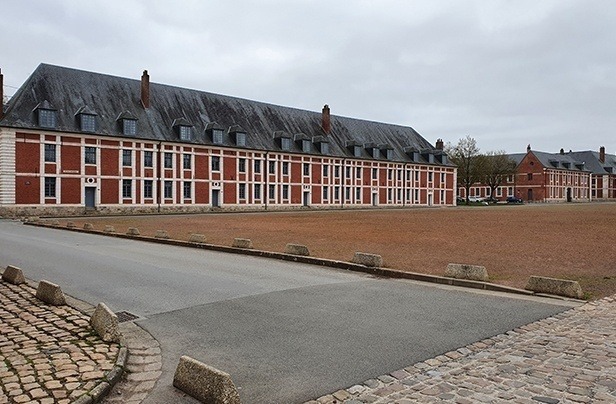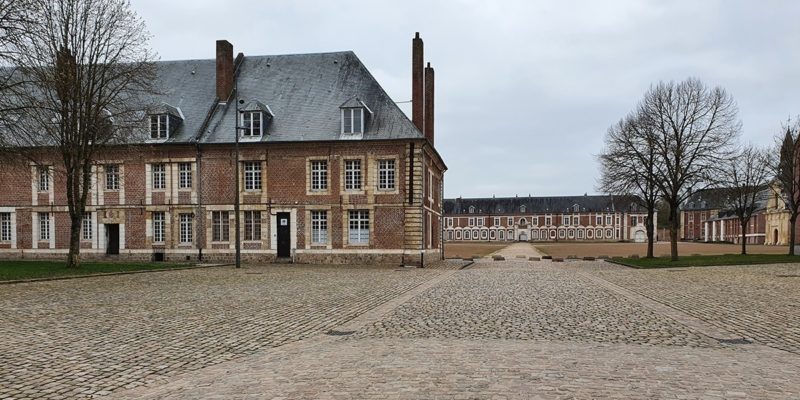The Spanish influence still visible on the squares of Arras today will have lived through the confrontation between France and Spain. Although Spanish sovereignty was in place before 1640, Arras and Artois in general returned to the Kingdom of France in the 17th century. Let’s take a closer look at this historic period of reconquest, which took place in the midst of misery and plague (the epidemic of 1635 comes to mind).
The war between France and Spain and the siege of Arras
In July 1635, a protracted war between Spain and France erupted, marking the beginning of a tumultuous period in European history. On August 15, 1636, the Spanish forces, led by Don Ferdinand, the brother of King Philippe IV of Spain, captured Corbie, a town now located in the Somme département. This event signaled a significant shift in power dynamics. Nevertheless, the French were quick to organize a response, setting the stage for years of military conflict that would ravage the Artesian countryside.
For four long years, the region witnessed a relentless series of military campaigns, resulting in widespread upheaval and forcing many inhabitants to flee their homes. Among these events was the renowned siege of Arras, vividly immortalized by Edmond Rostand in his famous play Cyrano de Bergerac. This historic siege began on June 13, 1640, and saw the participation of notable figures such as Comte d’Artagnan, who served as a cadet in the prestigious Gardes Françaises regiment.
During the siege, Arras was surrounded by a formidable force of around 30,000 soldiers, establishing a front line that extended over twenty kilometers. Despite being heavily outnumbered, the Spanish defenders put up a fierce resistance. The town was held by a garrison of 1,500 seasoned professional soldiers drawn from various regions, including Germany, Ireland, Wallonia, and Italy, alongside approximately 500 cavalrymen, primarily of Croatian origin.
The French, however, were not without reinforcements. Their besieging army was bolstered by an additional reserve force commanded by King Louis XIII himself, strategically positioned in Amiens. This period also coincided with the era of the famed Musketeers, adding to the dramatic and storied nature of the conflict. The siege of Arras thus became a defining episode in the broader war between France and Spain, showcasing the resilience, strategy, and military prowess of both sides.
 Resisting ardently, the besieged did not hesitate to sacrifice churches and monasteries on the outskirts of the town, but broke down on August 6 at the bastion of Saint-Nicolas. The besieged of Arras surrendered on August 9, 1640 at Blangy.
Resisting ardently, the besieged did not hesitate to sacrifice churches and monasteries on the outskirts of the town, but broke down on August 6 at the bastion of Saint-Nicolas. The besieged of Arras surrendered on August 9, 1640 at Blangy.
Arras and the aftermath of the French takeover
The recapture of Arras by French royal troops was not without consequences. In exchange for their loyalty to Louis XIII, the monks retained the possibility of protecting their property, dignities and franchises; the administration in Arras was maintained. While the population resumed its activities, many religious, notably some forty of the monks of Saint-Vaast, packed their bags. Likewise, the members of the Artois Council as a whole left the city, as did some members of the States of Artois and the public prosecutor of the Arras échevinage (an échevinage is a system of judicial organization operating in a jurisdiction composed simultaneously of so-called professional judges and so-called lay judges). As the capital of the reconquered Artois region, Arras became a kind of new local regime from this date until 1678. Held by Governor de Montdejeux, the town was garrisoned by the French, but was again besieged by the Spanish.
It wasn’t until Turenne’s victory in 1654 and the Peace of the Pyrenees on June 4, 1659 that Artois was definitively conquered by the Kingdom of France. 
Arras, a military stronghold in the 17th century
As the gateway from the Kingdom of France to Flanders, Arras was in a key geographical position for the belligerents of the time. That’s why, under Louis XIV, Vauban built the Citadelle on the orders of the King and Louvois.
The barracks in the Schramm district (Grand Quartier at the time), built in 1680, could house 1,500 men and 1,300 horses. The town’s strategic status became less real from the 18th century onwards, as it was further away from the borders and acted more as a second curtain. The fact remains, however, that the century of wars largely undermined the town’s economic and social situation during the 17th and early 13th centuries. Although the birth rate was higher than the death rate at the time, the end-of-century subsistence crises and the Great Winter (1692-1693), but especially 1709-1711, were a further source of misery that plunged the town into a food crisis.
X.D.
